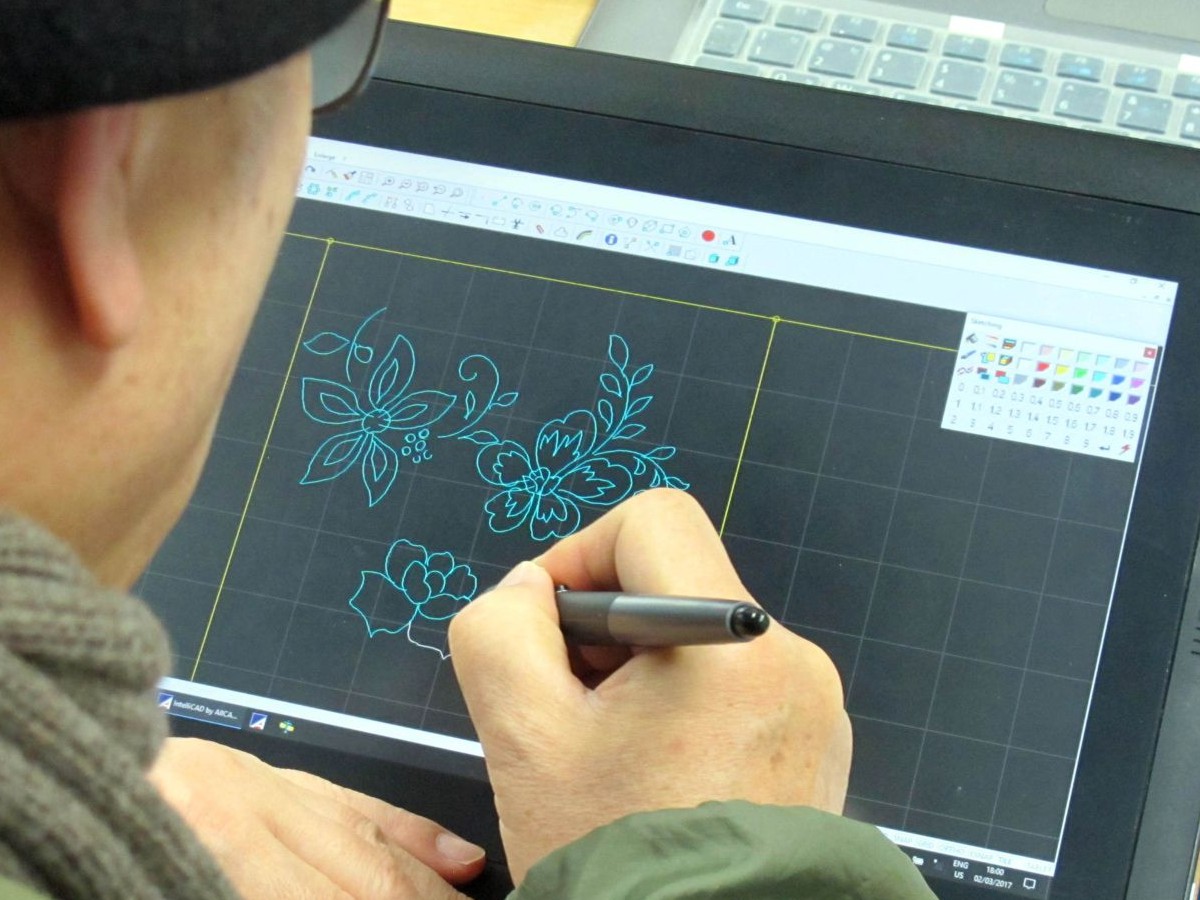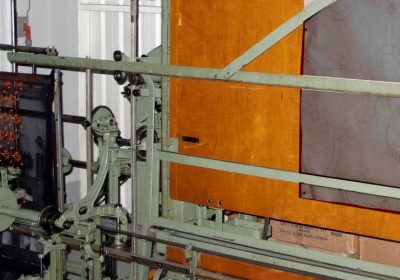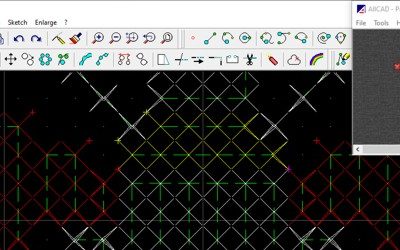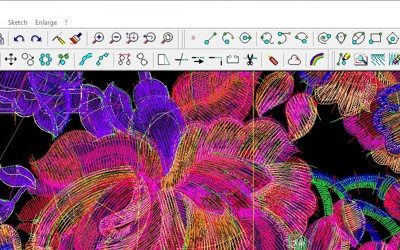Paperless from the Idea to the Machine Data
The development of an Embroidery Design is a time consuming process and involves many steps, but also people with different skills.
In most cases a Designer draws a Hand Sketch on paper or uses a graphic tool like Photoshop®.
In a second step the scanned hand sketch or the Photoshop® design has to be traced again to take it over into an Embroidery Design System. There the design has to be resolved into stitches. The result is a Technical Embroidery Design which can be passed to the Puncher to covert the design into machine readable data.
Traditionally, different tools and programs are used in this process and the design has to be traced in every step again. This is clearly not very efficient and takes much time.
Not with ProLace!
With ProLace 5.6 you can draw the sketch with a pen on a traditional tablet or on a screen-tablet. With a pen you can design like on paper, but with the advantage that all the construction aids of ProLace are at your disposal. Repeat and Rang connections can be checked easily and the design can be corrected accordingly.

This process creates contours that can be utilized directly. No further tracing of the sketch is necessary.
Directly from the Sketch to the Technical Design
The resulting design can directly be filled with stitches. A technical drawing with ready punched but not yet connected embroidery objects is created.
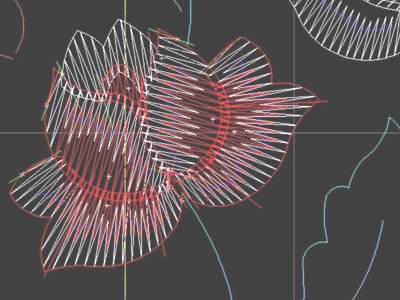
With this technical drawing, a Close to Reality Embroidery Simulation can be generated and a stitch estimation can be carried out.
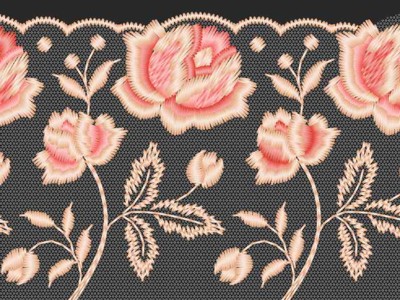
The approved drawing file can then be passed to the puncher, who has to connect the individual embroidery objects and add machine commands.
A huge Game Changer
The advantage to sketch directly with ProLace is obvious. First you save time to elaborate a hand sketch or a Photoshop® sketch, and subsequently the scanning and re-tracing of the sketch.
In the upper example sketching took about 10 minutes only. In the traditional way at least one hour would be required to draw the sketch, scan it and trace it again. In this hour the design could already be punched with ProLace.

